'In Mumbai, isolation is a very different isolation.'
'It's not about actual physical loneliness.'
'It's the loneliness in the company of others, and I felt that that is a very Mumbai thing.'
'You can be travelling in the ladies compartment squashed against everybody's armpits and still be really, really sad and alone.'
Payal Kapadia, the acclaimed director of All We Imagine As Light, speaks to Raja Sen, the well-known film critic.

Speaking with Payal Kapadia is even better than watching her film.
The director of All We Imagine As Light is fizzy, excitable and, even when her acclaimed film is conquering the world, disarmingly down to earth. I can't think of a better ambassador for modern Indian cinema.
I spoke with the filmmaker about the specific creative decisions behind her film.
Where does the rice cooker come from?
Why the film seems to have been made in two distinct halves?
Why is the aesthetic the way it is?
Does she see herself as a romantic filmmaker?
Here is Kapadia's spoiler-y conversation about why All We Imagine As Light is the way it is with Raja Sen.

Let's start with the rice cooker. When it appears in their life, it's this shiny, totemic instrument. It reminded me of the bottle of Coca Cola in The Gods Must Be Crazy.
Oh! Interesting ref (erence)! I guess it's similar because of the context.
Yes, and it is so new to them. A completely alien and consumerist device landing up without warning.
I actually really liked this movie when I was a kid. It was a great film, no? (Laughs) Thanks for reminding me of it.
So yeah, this cooker was like that only.
I was trying to think about this kitchen appliance where this 'family life' of ladies is sold to her. We eat a lot of rice (in India) but the rice cooker is still a little higher level.
If you have that money, then you can get a rice cooker.
And then the woman's life is easier because she can make more rice for other people. But she doesn't have a family. So, for whom will she make rice?
She doesn't need such a big cooker for herself. So I was thinking about that, like, the rice cooker as a feeling of this family unit.
And also this, like, this consumerism and capitalism that is mixed so nicely in India -- not nicely but violently, with patriarchal feelings that are sold to women.
I was thinking about that what could it be that it embodies all these different dots in my head, but it can be something really normal, like something so banal, like a cooker.
Right. And like you said, it's something you don't necessarily need.
Yeah. But you think that your life will be better and I will be a better mother, wife, all these things because of a cooker.

Let's talk about the genesis of the story itself. Where did this begin for you?
I started writing this film in my final year at FTII, doing my diploma film.
At that time, I didn't have a script.
There were six months to make the film, and I had two family members who were in different medical situations. I was the only one in my family who was going from one to the other place.
I was spending a lot of time in waiting rooms basically and with nurses at this time. And because you're a student and every mise en scene becomes, like, interesting.
So I said I'll make this film. It will be in a hospital and it will be about nurses because it's a space where a lot of women work. And in our country, places where a lot of women work are not that many.
I started meeting people.
I started doing research.
I made pals with the nursing ladies, and heard a lot of their stories about training and leaving home. I realised I could actually make a much longer film. That 20-minute diploma film would have been neither here nor there.
One of my main focuses or obsessions was this contradiction that exists in India like it comes from, let's say, even (Ritwik Ghatak's 1960 classic) Meghe Dhaka Tara of a woman who is supporting the entire family but nobody is there for her.

Yes, the love for that film comes through.
In fact, I even wanted to put a reference of a chappal breaking. But I didn't do it. I love this movie so much.
I'm a big Ghatak fan.
And just think from that time to now, things are not that different.
You met many nurses, heard many stories. When did it become clear to you that you wanted to tell the story of an older nurse and a younger nurse? That dynamic that drives the film.
When I started writing the film, I was younger.
For me, that time, I was looking a bit at the older nurse. The film is through the younger nurse looking at the older nurse. Then I grew older. Now, I'm 38. So, I'm closer to the older nurse.
When did you start working on the film?
I was maybe 31, 32. So I was younger then and my preoccupations were different.
Later, I became more empathetic towards the older nurse. I think my allegiance has shifted.

What about Parvathy?
Parvathy wasn't a major character before.
But when I started doing pre-production, I had this stupid idea that I will cast actual Konkani ladies who are from Mumbai and are working.
I met some 200 women, and they were like, we are not taking a holiday from our job to work with you.
Who will give us a job back after this?
Are you going to employ us?
So I realised I can't do that.
But that process made me meet a lot of interesting women from the region who have a history with the mills, have a history with displacement in Mumbai.
This kind of opened up a world for me and Parvathy became a much bigger character than she initially was.
I felt she is kind of like a reflection of Mumbai, of the Maharashtrian women who had to kind of pull up their socks and replace the men in their families because of the mill strikes.
As a non-fiction filmmaker, do you find that these processes like casting become exploratory for you? That instead of just casting, you are listening to their stories and letting all of that develop your overall narrative.
Yeah, that helps me a lot. Even while writing the script, (I like) meeting a lot of people just for the sake of meeting. Because life is interesting, it's more interesting than one can imagine, what imagination can do.

What about the visuals? Did they come alongside the writing?
Yes. When I was working with my DOP (Director of Photography Ranabir Das), we would shoot a lot of Mumbai, over many monsoons.
Like without that script, let's see how it is.
How does red look in the monsoon?
How does a BEST bus look?
How does a skywalk look?
Doston ko bulaate the kabhi kabhi ki can you all just go in the metro and be our actors? I have a lot of weird footage from this time.
I think, yeah, maybe that comes from non-fiction. It's what I enjoy.
You can shoot a bit, you can edit, then you can say, let's do it again.
In fiction, that doesn't happen.
I was a bit nervous also, I think, that I wanted to have everything inside me internalised so that I could approach the fiction somehow.

Fair. And what was the most challenging bit in terms of fiction? Was it the act of writing? Because while your documentary, A Night Of Knowing Nothing, had a fictional romance over real events, it must be different to create characters and narratives from scratch.
Yeah. It took a long time honestly, like, writing it and changing because as you grow older, like I said, your relationship with the material changes.
I think that's true of non-fiction also, like, when I started making I Don't Know Nothing, it took five years. So how we were shooting in the beginning and how we were looking at that footage five years later was so different.
And I think that's also good, like, you're changing all the time, and that's life.
So I think writing was hard. I've written shorts before but that is a whole different thing, and features are a whole different mindset because at the end of the day, you have to sustain it for that long.
Here, the script has to hold. It can't just be like, oh, nice feelings.
Is that why the film is structured like two films?
Yes. What I did for myself and something that I was very keen to do was to make a two-part film because I felt I could handle, even if I wasn't doing non-fiction, maybe I could shoot in a non-fiction way -- so that if I shoot the first part, I get two months to edit, and then I can do my recce again and then shoot the next part after a few months.
That is a non-fiction process. I sneaked it into the script just to know the kind of person I am, my temperament to protect that.
But I also wanted the season to change. And I wanted to work with time.
So the first part of the film is very much more montage, the scenes are shorter. But the second part is one day.
I think cinema is a medium where we can do a lot of things and that excites me a lot. So, I wanted to try it.
When I was writing it, I realised that it's nice to make these theories, but when you're practically doing it, how does time feel?
It became a bit hard for me and was a lot of trial and error that finally the film is what it is.
But I like that also. I think that the joy of filmmaking is also not knowing.
Absolutely. To put yourself out there and see what turns out.
I really like the films of Miguel Gomes. I don't know if you know him as a filmmaker, but every film, he's made a lot of films, is like an experiment.

Given your last film and this one, is romance a big theme for you? Are you a romantic filmmaker in that sense?
Yeah, I'm very romantic.
But I started making both films in my early 30s. At that time, the romance was all my friends were in that stage, like should I be with this person, should I not be?
I went to FTII a bit older, so most of my friends were younger than me. So maybe I was always listening to the two themes that were moving to Mumbai, and can I be with this person, will my parents accept them.
Now things have changed. So maybe in the next film, I won't have the same preoccupations. This time I think it was very much part of my immediate zeitgeist.
So I think that's why. But I am very romantic. I love romantic movies.
Because in terms of romance, it's not just the young nurse and her spy vibe in the burkha on the train. It's also the missing husband and the fable we end up with.
I like romance, you're right, I shouldn't shy away from it.
It's so nice yaar, romance.
I think I'm a bit of a cheesy person.
I want to make serious films that are also cheesy.
If you can find a balance like that... I think Apichatpong (Weerasethakul, Thai director) is like that. He's serious, but also really cheesy: 'I can't sleep, I can't eat.'
I think that's poetry, right? If you're trying to go with a certain lyrical or poetic style, you have to embrace a certain cheesiness as well.
Yeah, I guess so.

Aesthetically, you've shot both halves so differently. In the first half, there's a washed out, diffused, almost dreamlike quality to the way Mumbai is shot, especially that shot where you see the train in the background through a window and a character talking on the phone in the foreground.
The other part outside the city is very spare, it becomes all about room to breathe, and the fact that the characters finally have space is the dream itself.
So the Mumbai part, we wanted it to be like a lot of planes, so you always see somebody in a relationship to a background. So if she's in her house also through the window you're seeing the train passing. Or if Parvati's talking, behind her is the hospital. Many layers of things.
Because in Mumbai, isolation is a very different isolation.
It's not about actual physical loneliness.
It's the loneliness in the company of others, and I felt that that is a very Mumbai thing or actually any big city thing.
You can be travelling in the ladies compartment squashed against everybody's armpits and still be really, really sad and alone.
So I was thinking a lot about all the characters, the space, everything being interconnected, not separate.
But in the second half, it was more like a funnel where it's just these three characters and their internal landscape becomes more important.
Their dreams, their desires, their close ups.
Because in no way do I want to say that the countryside is better.
That's also going to be really hard. It starts with Anu coming into the house saying there's no electricity here. It's not going to be easy for her.

The film is very blue, very cool. The city sections, especially.
Cooler in the first half, yes, but also dank.
That was the intention, trying to get how the city is this kind of yucky wet sometimes.
You don't like it.
Like in Mumbai rains, if you travel by train, your pant is wet up to here (gestures to knee) and then you're just suffering.
You're wearing those horrible fake Crocs, those Bata ones, and your feet are... (shudders) Anyway, so I wanted to capture that feeling also.
Let's talk about your actors, who are fantastic. Did you workshop a lot? Because they seem so easy around each other and they play off each other so well and so effortlessly, especially the two of them sharing a home.
Yeah, yeah. With Anu and Prabha, we lived together for three weeks. They were staying with me and every day we would be doing in the kitchen, things, we would be doing in my bedroom, things.
The DOP was also there in the workshops, so it was nice because that way, we could we could really feed off them as actors.
I don't speak Malayalam, so for me to internalise the language it took a long time to be able to direct in that language.
I had an associate director who is Malayali and we had worked together for two years for the cadence of the language to work out. We gave each of them a regional identity also, like Anu's from Palakkad, Prabha's from Kollam, so how their slang will be and all these kind of things we had worked out beforehand.
So I needed time in the workshops. It wasn't just for the actors, it was for me as well.
With Chhaya, it took fewer days because I speak Marathi and Hindi.
Also, Divya (Prabha) and Kani (Kusruti) are very old friends but in the film, they are roommates and a little weird with each other.
So how to bring that in as well.
They are very different from their characters in the film.
Kani is not at all this person, and Divya is very jovial but Anu is ridiculous -- no one can be like that at all times.

Sounds like you had a blast.
Yeah. We took a long time to work together but because I am a process person, I enjoyed this.
It was like documenting, and we were watching a lot of those rushes.
We would shoot, we would watch it in the evening, and see what is interesting.
We added scenes because some of the chemistry was so nice. It's good that you find people who are willing to give you that time.
Critics have loved the film. Have you heard any bad reviews?
Have you seen my Letterboxd? One or two will come 'I went to sleep.'
It's okay for a film with a dream-like quality to make you sleep.
(Laughs) Oh, I should start using this profound answer, like Apichatpong!
Mostly it's been quite positive, thankfully, and that's all one can hope for while making a film.
In our profession, anyone can say anything and you have to be okay with it. Slowly, slowly I'm trying my best to be okay.
(At this point, we hear an agitation outside the window. Women are raising their voices. We step to the window and see that this is a rally of schoolgirls, encouraging citizens of Mumbai to cast their votes. Kapadia is instantly ecstatic.)
(Laughs) Awesome. So good! What a sight!

Yes, young women making themselves heard.
Young women. This is fully apt, no? See? Life is more interesting, yeh hum script mein nahin likh paate.
I love it. (Thrilled laugh)
These are the kids who will watch my films!

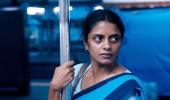
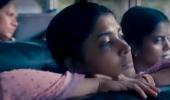
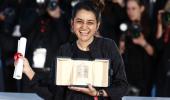
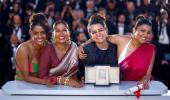
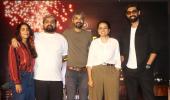



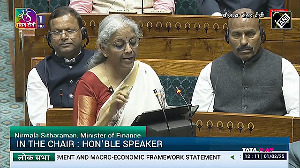
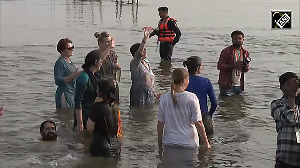
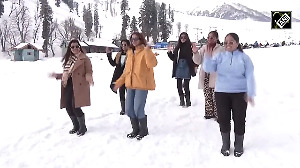
 © 2025
© 2025